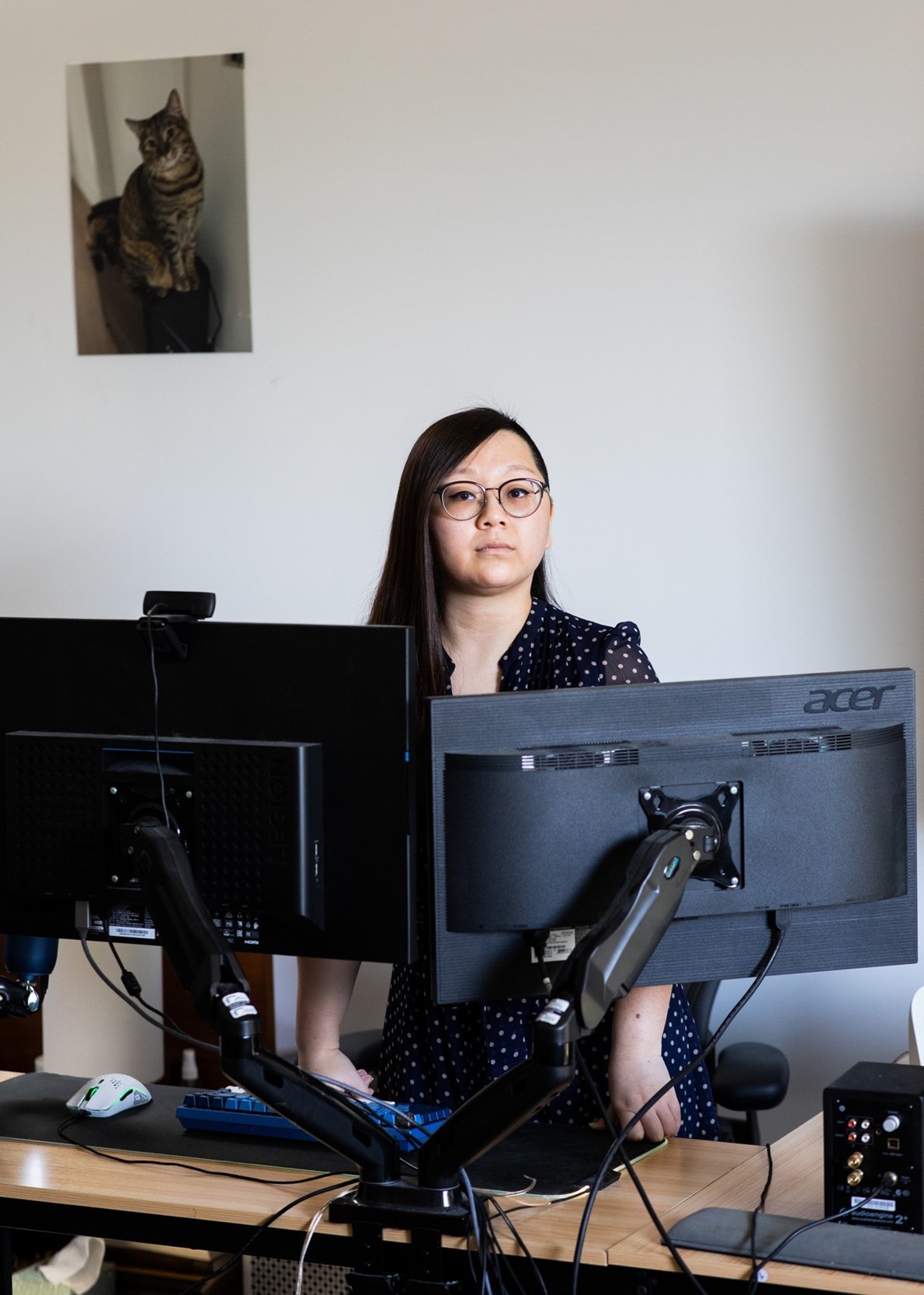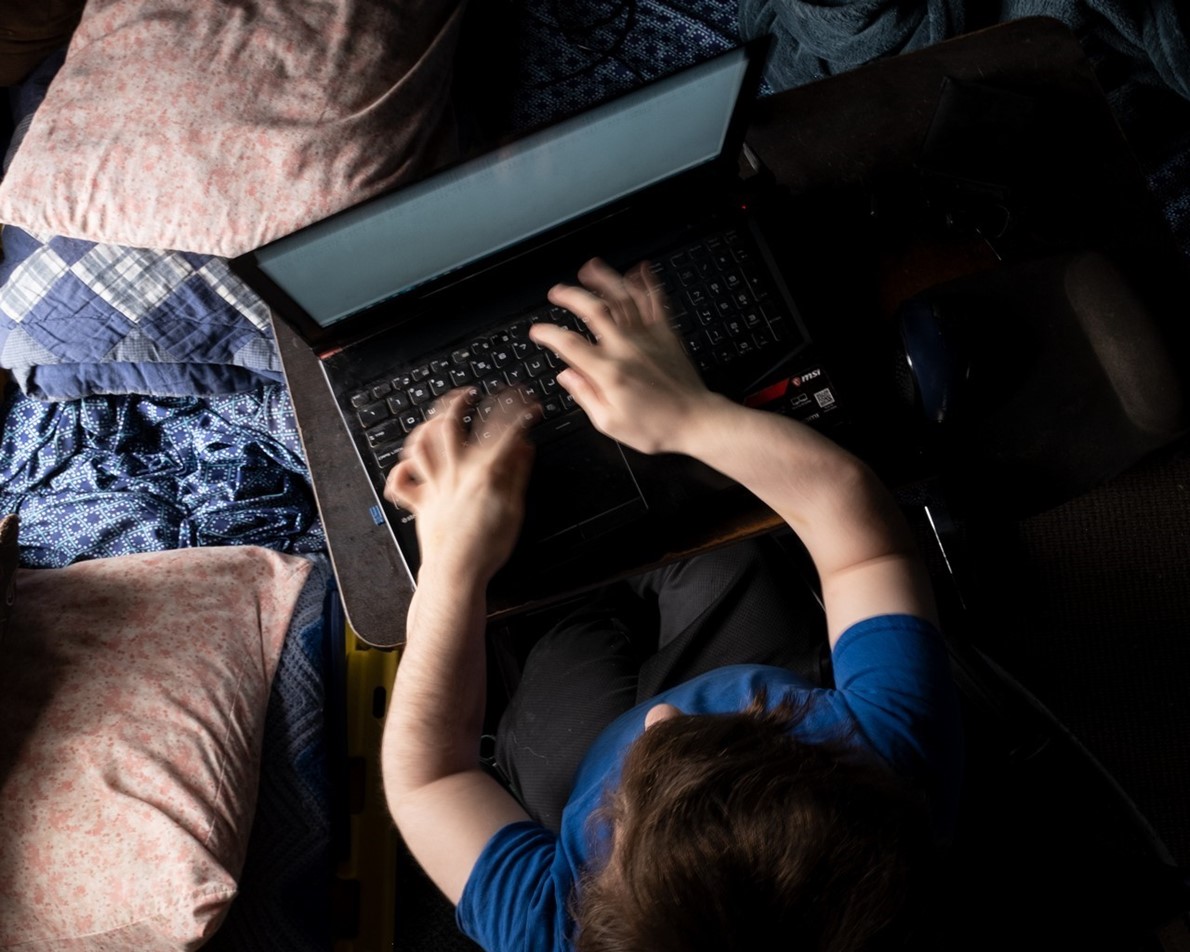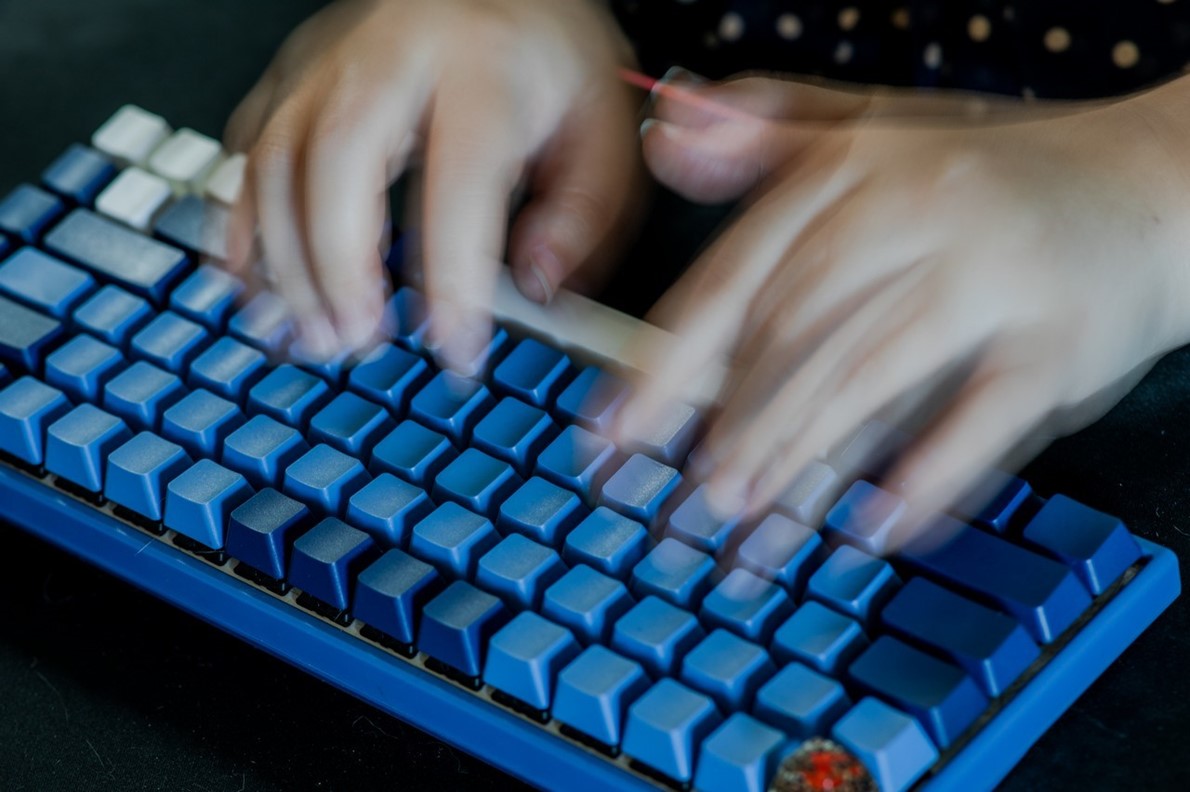In the hands of Hunter Shaffer, the sentence you are
reading right now would take seven or eight seconds to type. This entire
article would be done in just over seven minutes, and a recent Sunday Styles
print section of the New York Times would take about 86 minutes.
اضافة اعلان
During a recent online competition, Shaffer and eight other
competitive typists watched as numbers on the screen counted down and gave way
to the word “Go.” A leaderboard showed the competitors’ progress, accuracy, and
words typed per minute.
 Kathy Chiang, a high-level competitive typist, at home in Los Angeles, on April 15, 2022.
Kathy Chiang, a high-level competitive typist, at home in Los Angeles, on April 15, 2022.
It was over in about 60 seconds, but Shaffer’s performance
gnawed at him. Normally, he would have jockeyed for first place, but nerve
problems in his left hand forced him to type one-handed for a while.
Over several hours, Shaffer repeatedly finished just behind a
teenager in the
Philippines and a friend from Virginia, despite typing as fast
as 189 words per minute.
Competitive typing, which peaked in popularity in the first half
of the 20th century before fizzling out, has found a new home online. A devoted
community has developed around the hobby, which has become increasingly popular
with teenagers and 20-somethings.
There are numerous typing websites, each with a slightly
different flavor. Casual typing enthusiasts often land at 10FastFingers.
Monkeytype allows users to customize the words or passages they type, such as
lists of more difficult words or words the user has previously mistyped. One of
the most popular,
TypeRacer, displays cars on a track for each racing typist.
Keymash is favored by many top-tier typists for its emphasis on competition.
 Hunter Shaffer, a high-level competitive typist, works on a laptop at home in Parish, New York, on April 10, 2022.
Hunter Shaffer, a high-level competitive typist, works on a laptop at home in Parish, New York, on April 10, 2022.
Although it has a low-key profile today, competitive typing once
carried more cachet.
“I didn’t realize that the typing championships were such a big
deal in the first half of the 20th century, considering how small a deal they
were when I was growing up,” Sean Wrona said.
Wrona, 37, of North Syracuse,
New York, cut his teeth on
primitive typing computer games in the 1990s but largely forgot about typing.
In 2008, while he was a graduate student in applied statistics at
Cornell University, a friend introduced him to a Facebook typing game. Wrona was
surprised that he was one of the fastest people and soon received friend
requests from around the world.
Wrona went on to win the Ultimate Typing Championship in 2010, a
global contest sponsored by a keyboard manufacturer. He’s widely regarded in
the typing community as the greatest typist of the modern era. Although he’d
largely stepped away from competitive typing, Wrona decided to write a book on
the subject and was surprised to learn typing contests emerged as early as the
late 1880s and became popular in the 1920s.
Typewriter manufacturers, eager to test and market their wares,
held well-funded and highly publicized typing competitions at venues such as
Madison Square Garden. The events were usually tied to business conventions and
drew thousands of spectators; some champions became celebrities and toured the
country.
“This was a pretty massive thing that has almost been entirely
forgotten,” Wrona said.
Quirky? More like QWERTY
Shaffer, 24, of Parish, New York, was home-schooled with his two
brothers and stumbled on an early typing website a decade ago. He discovered he
was faster than his siblings and signed up for other typing websites.
Born with a brittle bone disorder that caused hundreds of broken
bones and an opiate dependence to manage the pain, Shaffer found that even when
one arm was in a cast, he could still type fast enough one-handed to beat
average typists. When able to use both hands, he excelled. His score on the
10FastFingers all-time 60-second test leaderboard — 227 wpm — is still in the
top 10.
 Hunter Shaffer, a high-level competitive typist, works on a laptop at home in Parish, New York, on April 10, 2022.
Hunter Shaffer, a high-level competitive typist, works on a laptop at home in Parish, New York, on April 10, 2022.
Shaffer said his speed comes, in part, from his excellent
memory. Most typing websites briefly show the words to be typed before the race
starts. By memorizing them, Shaffer said he can type faster.
“I think a lot of it also has to do with the curvature of my
arms,” he said. “It helped with my typing early on and still does.”
Shaffer types from a wheelchair and on a laptop. His arms are
curved because of repeated broken bones. In 2014, his left forearm was
surgically straightened. His left hand hasn’t moved as quickly since, and he
said he hasn’t had his right arm repaired over concerns that surgery could
cause nerve damage.
‘It’s kind of like a
sport’
Many of the fastest typists discovered early that they were
naturally quick on a keyboard, but whether competitive typing requires skill or
merely a lot of practice remains a question.
“Natural talent is a really hotly debated topic in the typing
community,” Ardian Peach said.
Peach, 19, of Dumfries, Virginia, believes anyone can become
fast with enough practice. After all, Peach, who has not learned to type
properly, was in a middle school computer science class when he first took a
typing test and ended up at 100 wpm (40 wpm is the average for noncompetitive
typists).
When he was 15, Peach found TypeRacer, taught himself to type
using all his fingers and increased his speed, reaching 150 wpm. But he eventually
plateaued and, assuming he had reached his limit, began practicing less.
A couple of years later, he read a book espousing the benefits
of deliberate practice and decided he had not been practicing efficiently. He
eventually reached a speed of more than 200 wpm.
Competitive typing may have become more popular in recent years,
in part because of the online messaging platform Discord, which offers a
simple, convenient way for users to communicate with other typists. But it
remains a niche hobby with a tight-knit community.
Kathy Chiang, 29, who lives in Los Angeles, picked up on the
uniqueness of the typing community almost immediately, partly because of her
career in gaming.
“It’s really interesting to stumble upon a community like that
that I hadn’t been aware of at all,” she said.
 Kathy Chiang, a high-level competitive typist, on a custom keyboard at home in Los Angeles, on April 15, 2022.
Kathy Chiang, a high-level competitive typist, on a custom keyboard at home in Los Angeles, on April 15, 2022.
An avid video gamer since childhood, Chiang was studying
computer game science at the
University of California at Irvine when a
co-worker noticed how fast she typed and encouraged her to test herself on a
typing website. Chiang became hooked.
In addition to being one of the fastest typists, she discovered
she was one of the few women in the community but said she was generally
welcomed.
Although she eventually withdrew from competitive typing because
of wrist injuries, Chiang said she found the typing community to be a friendlier
and less serious environment than the gaming community. Part of that could be
because of competitive typing’s relatively small reach.
“So, it’s kind of like a sport or an esport or a video game in
the really early stages where everyone feels like they’re part of this
grassroots movement,” she said. “It seems like this special thing that some
people want to keep secret and special and tight-knit.”
Read more Gaming
Jordan News



